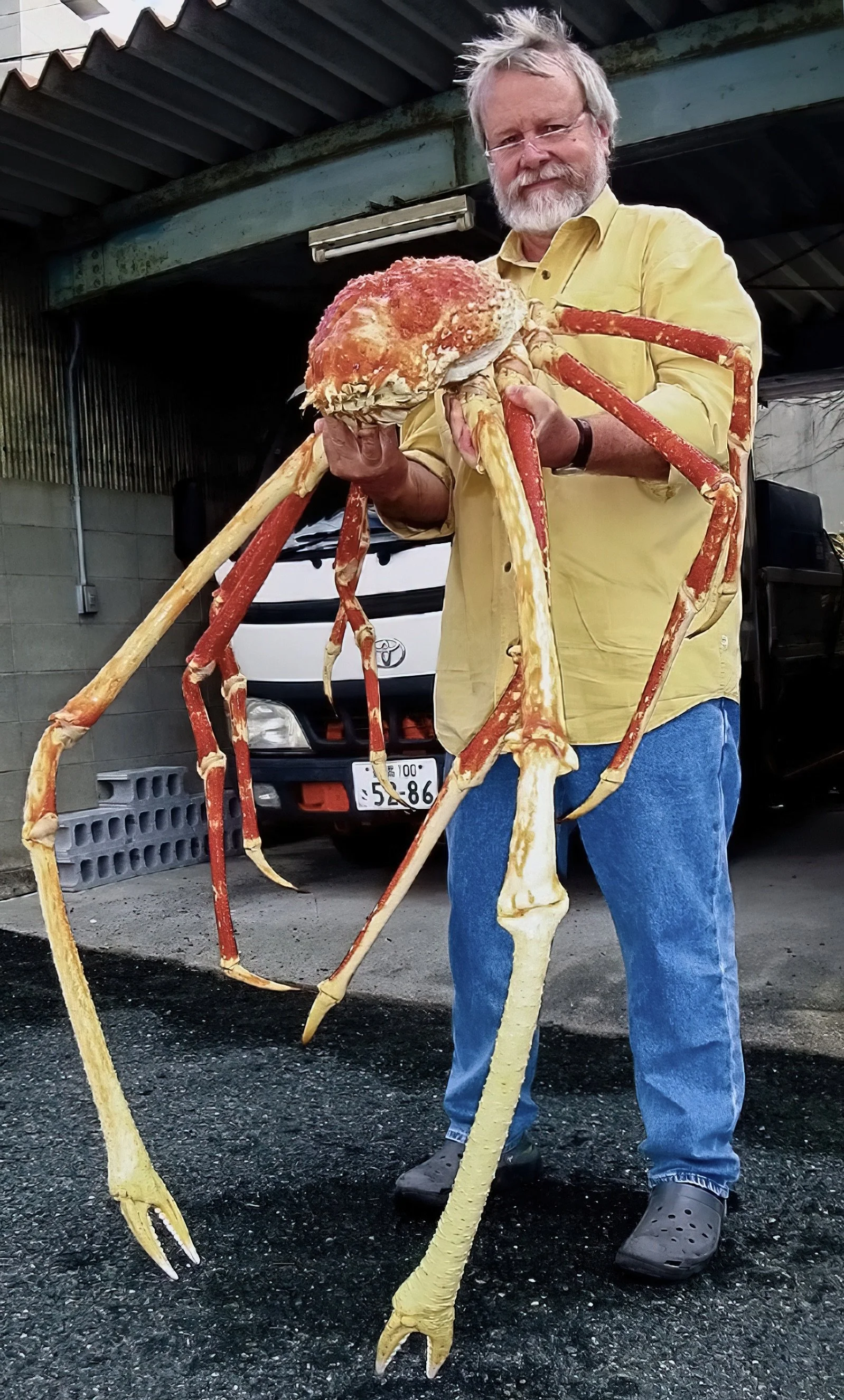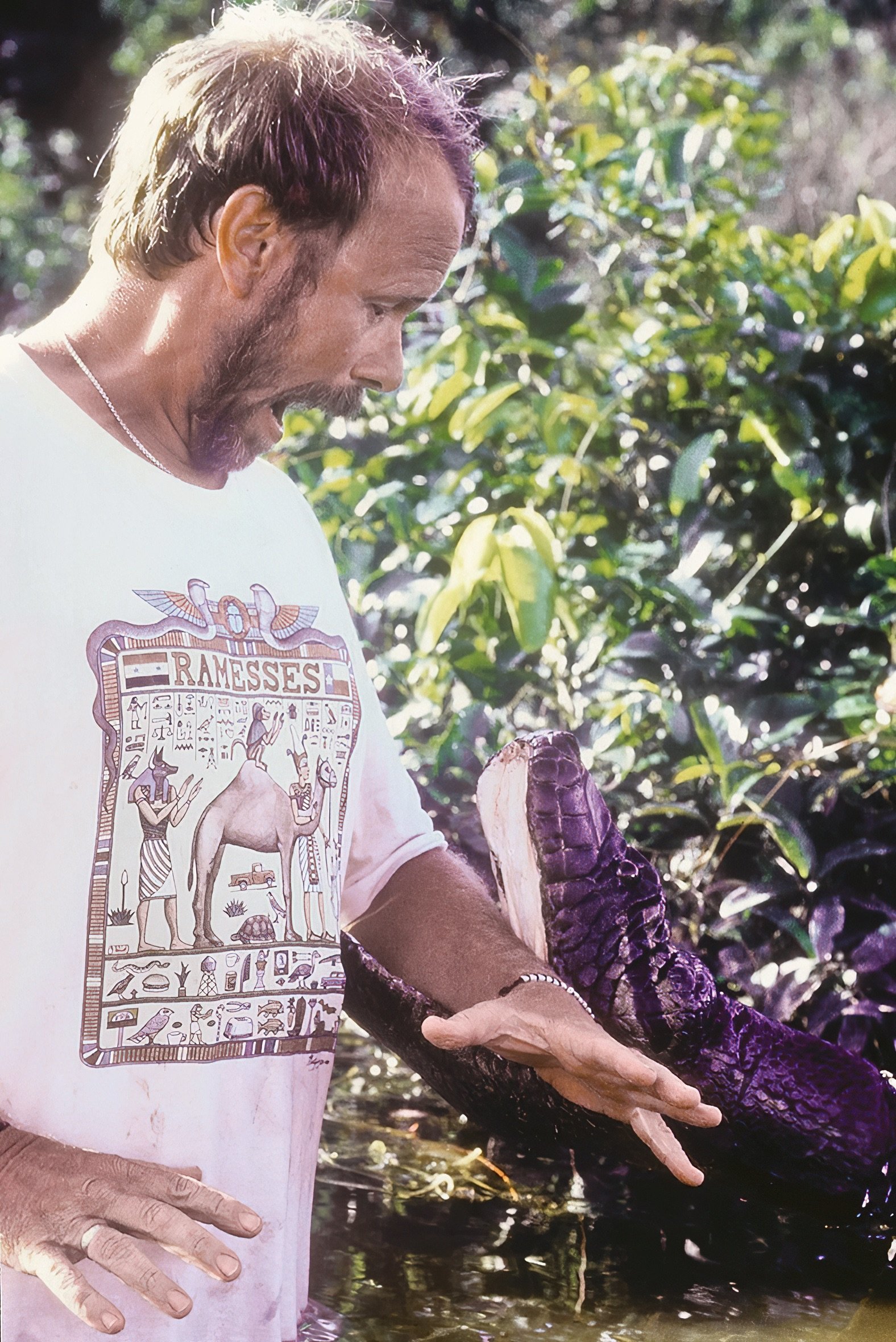Meet Los Esotéricos
For those wondering who’s behind the words and images on Exotica Esoterica, some photos from the workplace in our Latin American field offices and elsewhere.
Peter Rockstroh getting ready for work in páramo near Bogotá, Colombia with his trusted companion, “The Shrimp”. This beast is a rather substantial combination of hardware including a 30+ lb, 115 year-old modified tripod originally designed to support a surveyor’s theodolite, capped by a Majestic tripod head, a Chamonix View 8” x 10 camera and a Schneider APO Symmar 360 mm lens for capturing extremely high-resolution macrophotographs. Its nickname stems from, “A “camera” es una cámara, but a cámara grande es un “camarón” (=shrimp). Image: ©Wilson López.
Peter scanning the high canopy for tanagers in upper elevation rainforest in Chingaza NP in Colombia. Peter goes to great lengths to achieve the results shown in his images on this website and elsewhere. As he says, “Obviously, there are simpler ways to do things. Maybe not better, just simpler”. Image: ©Jay Vannini.
Peter caught accosting a frailejón (Espeletia sp.) with a montane princess flower (Tibouchina sp.) in the background at Páramo del Tablazo, Cundinamarca, Colombia. Image: ©Richard Monteiro.
William W. Lamar holding an immense Japanese Spider Crab (Macrocheira kaempferi) at Kyoto Prefecture, Japan in 2015. Out of the water these crabs are unable to support the weight of their appendages. This is the largest living arthropod species and tasty, too! Image: ©Danté Fenolio.
Bill examining a “tame” 16’/5 m captive American Crocodile (Crocodylus acutus) on the Río Reventazón, Costa Rica as part of National Geographic’s Deadly Dozen wildlife series. Image: ©Skip Hobbie/National Geographic.
Bill getting the bite put on him by a mechanical giant Anaconda (Eunectes murinus) used as a prop for a natural history documentary. Río Caicara, Venezuela. Image: ©Tim Martin/BBC.
Jay Vannini roadside with a rare Wizard’s Head Yam (Dioscorea bartlettii) living voucher in a lowland tropical rainforest tract in northern Alta Verapaz Department, Guatemala during the late 2000s. Image: ©Juan José Castillo.
Jay admiring a colony of the ornamental bromeliad Guzmania herrerae in the Veraguan Caribbean foothills of Panamá in the late 2000s. Image: ©Juan José Castillo.
Jay with a mature example of an undescribed Anthurium sp. in upper elevation Colombian cloud forest in 2021. Image: ©Fabian Alzate.
Ing. Juan José Castillo Mont is an old and dear friend of Peter and Jay. As a Universidad de San Carlos professor he has mentored two generations of Guatemalan botanists and agronomists and is an indefatigable instructor in field and classroom. His knowledge of Mesoamerican flora is encyclopedic and he is generous in sharing it with students and colleagues. JuanJo is well known to botanical researchers and conservation biologists throughout the region and has, among other things, coauthored the descriptions of several noteworthy Mesoamerican palm species. We have spent a fair amount of time in the field with him over the past two decades both in Guatemala and elsewhere in the region, and he has helped shaped our views on the complexity of native ecosystems and their conservation challenges. Here, he is shown examining a piece of Philodendron dolichophyllum at a megadiversity rainforest site in the Caribbean lowlands of Panamá, and (lower) framed by a cultivated Peruvian Amazon origin Anthurium pendulifolium at a private collection in southwestern Guatemala. Both images: ©Jay Vannini.
Peter Rockstroh and Jay Vannini relaxing after a very hard bit of walking in upper elevation Colombian cloud forest in September 2021. Image: ©Fabian Alzate 2021.
Still primitive at heart, Bill Lamar contemplates the world’s threatened biodiversity at Malpais, Puntarenas Province, Costa Rica. Image: ©Gavin Thurston/BBC.
All content ©Exotica Esoterica LLC® 2018-2025, ©Peter Rockstroh 2023, ©William W. Lamar 2023, ©Danté Fenolio 2023, ©Tim Martin, ©Gavin Thurston 2023, and ©Jay Vannini 2023.
Follow us on:

















